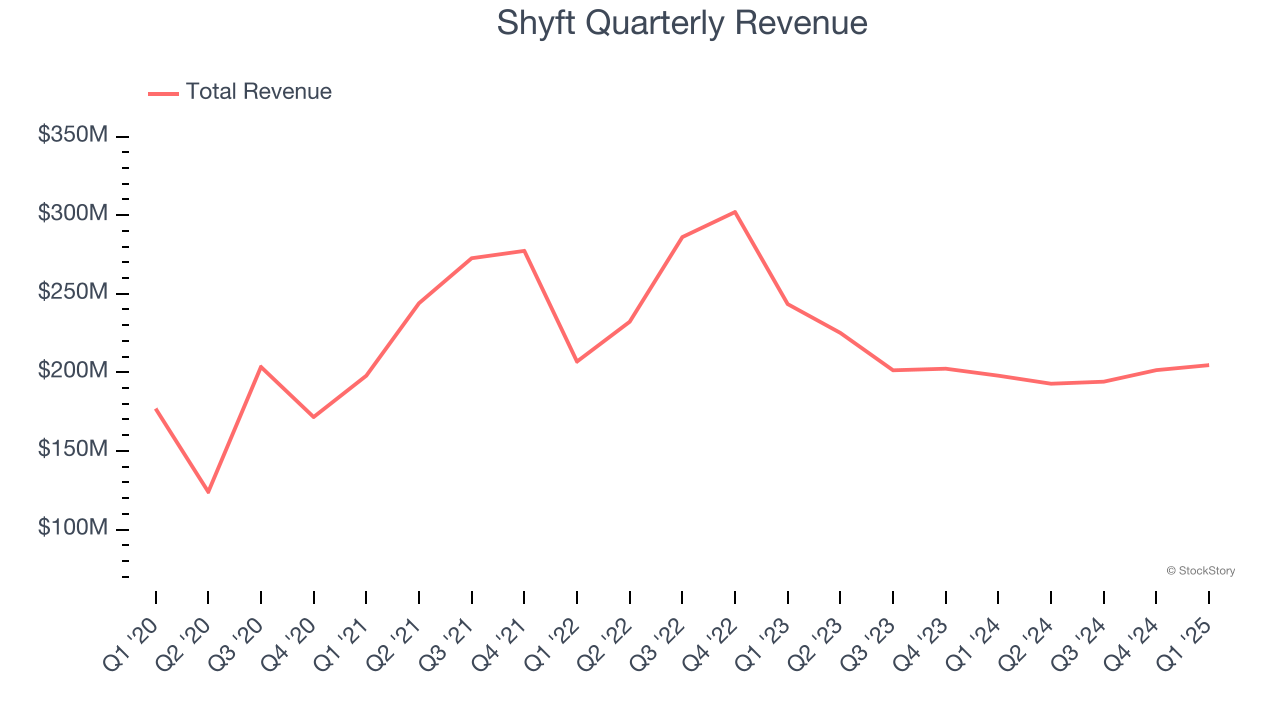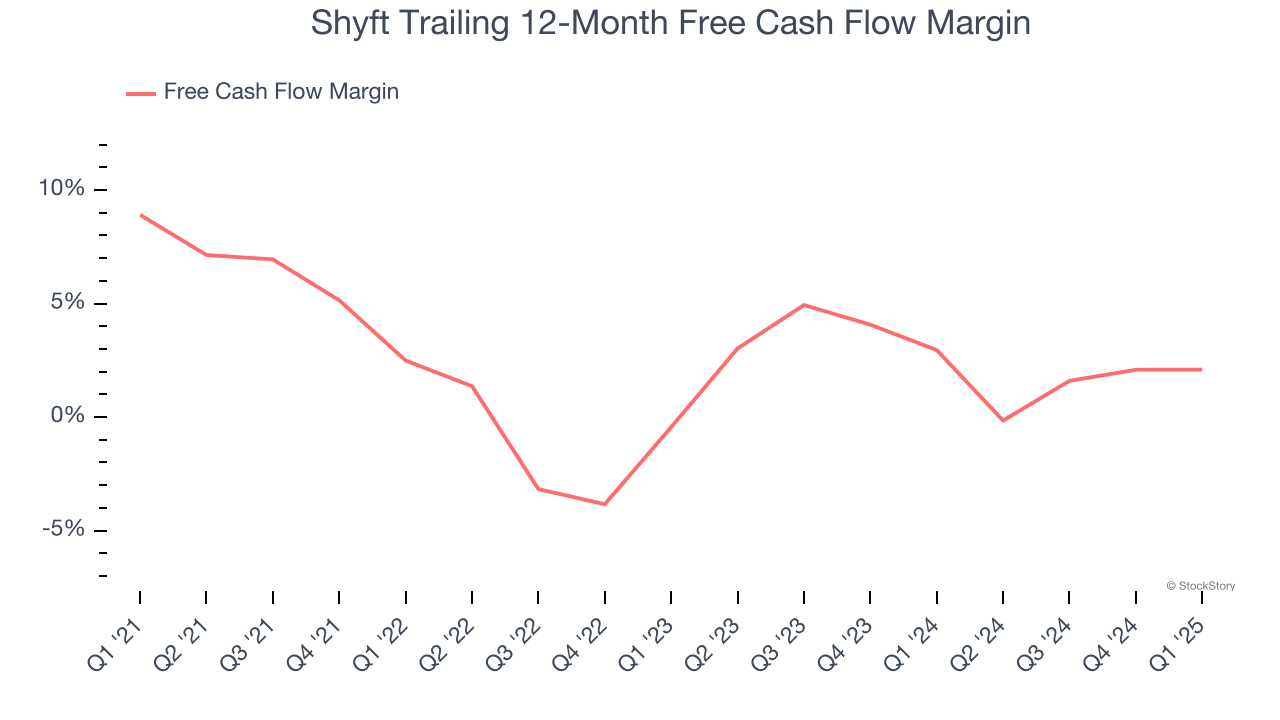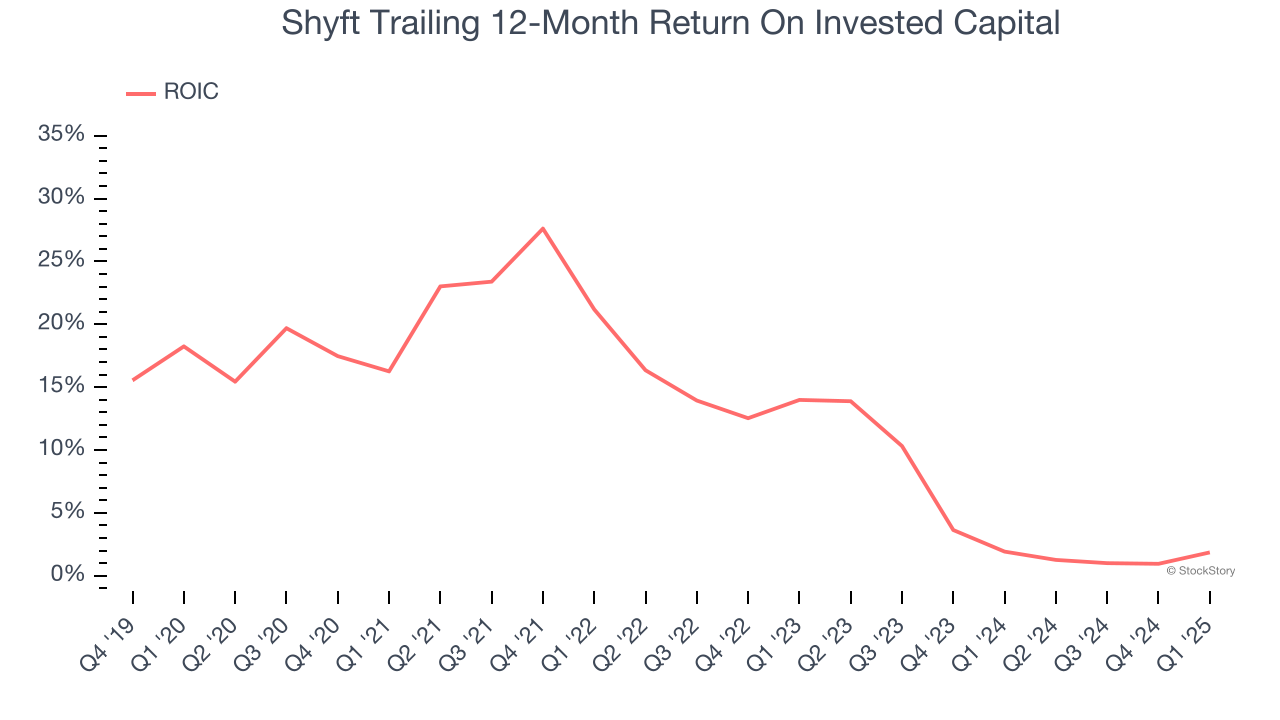
Shyft’s stock price has taken a beating over the past six months, shedding 31.6% of its value and falling to $9.84 per share. This might have investors contemplating their next move.
Is there a buying opportunity in Shyft, or does it present a risk to your portfolio? See what our analysts have to say in our full research report, it’s free.
Why Do We Think Shyft Will Underperform?
Even though the stock has become cheaper, we're sitting this one out for now. Here are three reasons why you should be careful with SHYF and a stock we'd rather own.
1. Long-Term Revenue Growth Flatter Than a Pancake
Reviewing a company’s long-term sales performance reveals insights into its quality. Even a bad business can shine for one or two quarters, but a top-tier one grows for years. Unfortunately, Shyft struggled to consistently increase demand as its $792.9 million of sales for the trailing 12 months was close to its revenue five years ago. This wasn’t a great result and signals it’s a low quality business. 
2. Free Cash Flow Margin Dropping
Free cash flow isn't a prominently featured metric in company financials and earnings releases, but we think it's telling because it accounts for all operating and capital expenses, making it tough to manipulate. Cash is king.
As you can see below, Shyft’s margin dropped by 6.8 percentage points over the last five years. Almost any movement in the wrong direction is undesirable because of its already low cash conversion. If the trend continues, it could signal it’s in the middle of a big investment cycle. Shyft’s free cash flow margin for the trailing 12 months was 2.1%.

3. New Investments Fail to Bear Fruit as ROIC Declines
A company’s ROIC, or return on invested capital, shows how much operating profit it makes compared to the money it has raised (debt and equity).
We like to invest in businesses with high returns, but the trend in a company’s ROIC is what often surprises the market and moves the stock price. Over the last few years, Shyft’s ROIC has unfortunately decreased significantly. We like what management has done in the past, but its declining returns are perhaps a symptom of fewer profitable growth opportunities.

Final Judgment
We cheer for all companies making their customers lives easier, but in the case of Shyft, we’ll be cheering from the sidelines. Following the recent decline, the stock trades at 9.2× forward P/E (or $9.84 per share). While this valuation is optically cheap, the potential downside is huge given its shaky fundamentals. There are better investments elsewhere. We’d suggest looking at a top digital advertising platform riding the creator economy.
Stocks We Like More Than Shyft
Market indices reached historic highs following Donald Trump’s presidential victory in November 2024, but the outlook for 2025 is clouded by new trade policies that could impact business confidence and growth.
While this has caused many investors to adopt a "fearful" wait-and-see approach, we’re leaning into our best ideas that can grow regardless of the political or macroeconomic climate. Take advantage of Mr. Market by checking out our Top 5 Growth Stocks for this month. This is a curated list of our High Quality stocks that have generated a market-beating return of 176% over the last five years.
Stocks that made our list in 2020 include now familiar names such as Nvidia (+1,545% between March 2020 and March 2025) as well as under-the-radar businesses like the once-small-cap company Exlservice (+354% five-year return). Find your next big winner with StockStory today.

